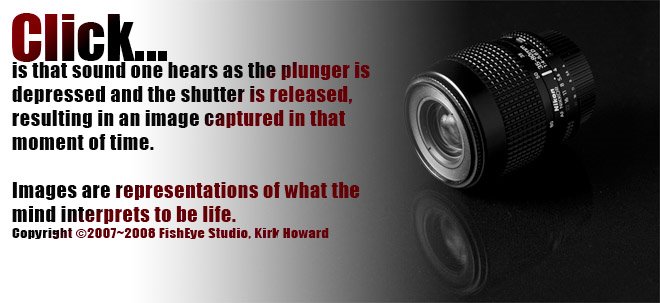I have to admit I have turned out to be a bit of a blog Junkie. Have been using the Google reader to combine all the blogs I subscribe to into on little readers digest online version. I have my reader set up to only load the newest entry to a subscription blog.
One of the blogs a frequently read is the Strobist. In some incestual way all these blogs are linked together. I first started to read Scott Kelby’s blog Photoshop Insider. I have read most of his books and I am a huge fan of his Business Plan and work ethic, not to mention I enjoy his writing style and photography.
Next is Matt Kloskowski. Matt has the very popular Adobe Lightroom Killer Tips blog that I read. Also, Matt works for NAPP (National Association of Photoshop Professionals). Now Scott Kelby is the editor and publisher of Photoshop User and Layers magazines, president and co-founder NAPP and author of many books, and co-author with Matt on a few books. So Scott is Matt’s boss.
Then there is Joe McNally’s blog. I am a new reader to his blog. He has been a photographer for over 30 years and his expertise and experience is educational. He has recently released a book called “The Moment it Clicks…”. Ever since I read this book I have become a fan of his work and a subscriber to his blog.
Joe is a regular contributor to NAPP’s Photoshop User magazine. He also has on-line classes on the new Kelby Training web site. Do you see where I am going with this?
This leads us to David Hobby. Yea that’s right his last name is Hobby. What a great name. Months ago I stumbled across his blog (Strobist) and found it interesting and fascinating. David is a master of off camera lighting. Either he uses a flash or strobe or studio lighting, but his focus is getting the light away from the camera. He is also a big fan of D.I.Y. (Do it Yourself) projects. I am currently working on a D.I.Y. project that I read about on his blog, that he got from another blog. Back to the incestual part of this post. I read Joe McNally’s blog about his trip to Dubai to teach photography techniques. Also on the trip were Scott Kelby and David Hobby. David went into the desert one evening to help with a photo shot. I say this because he assisted in setting up the Nikon SB-800 Light Tree for off camera lighting.
Back to the incestual part of this post. I read Joe McNally’s blog about his trip to Dubai to teach photography techniques. Also on the trip were Scott Kelby and David Hobby. David went into the desert one evening to help with a photo shot. I say this because he assisted in setting up the Nikon SB-800 Light Tree for off camera lighting.
I imagine it will only be a matter of time before Scott Kelby will Assimilate David Hobby into the NAPP Collective. If it hasn't happen already.
David on his blog this morning has added a link to another blog. This blog talks about the use of rope lighting to show action. Here is a picture and the link to the blog. It is well worth a read. I have some new ideas now.






